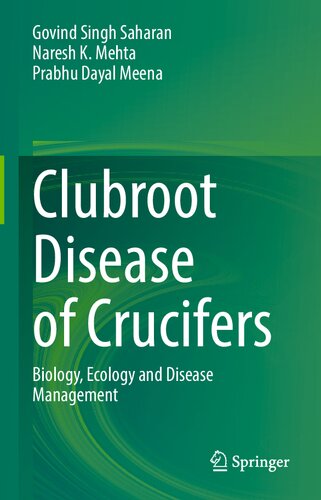

Most ebook files are in PDF format, so you can easily read them using various software such as Foxit Reader or directly on the Google Chrome browser.
Some ebook files are released by publishers in other formats such as .awz, .mobi, .epub, .fb2, etc. You may need to install specific software to read these formats on mobile/PC, such as Calibre.
Please read the tutorial at this link: https://ebookbell.com/faq
We offer FREE conversion to the popular formats you request; however, this may take some time. Therefore, right after payment, please email us, and we will try to provide the service as quickly as possible.
For some exceptional file formats or broken links (if any), please refrain from opening any disputes. Instead, email us first, and we will try to assist within a maximum of 6 hours.
EbookBell Team

4.0
16 reviewsThe book is presenting a comprehensive information on fundamental, and applied knowledge of Plasmodiophora brassicae Woronin. infecting cruciferous crops, and weeds. Clubroot of crucifers has spread over more than 88 countries of the world with average annual loss of cruciferous crops from 10-15 per cent at global level. It is considered as a disease of cultivation since once introduced in a field, its inoculum piles up year by year in the form of resilient resting spores of P. brassicae which spreads in the field through field operations. This disease is very unique since the pathogen can survive in the soil in the rhizosphere of non-host plants in addition to its main host cruciferous species, cultivated or wild. This book complies inclusive information about the disease, its geographical distribution, symptoms, host range, yield losses, and disease assessment scales. The book also explores host-parasite interactions in the form of seed infection, disease cycle, process of infection, pathogenesis, epidemiology and forecasting. Chapters discuss the genetic and molecular mechanisms of host-parasite relationships, management practices including cultural, chemical, biological control practices, and other integrated approaches. The book is immensely useful to researchers, teachers, extension specialists, farmers, and all others who are interested to grow healthy and profitable cruciferous crops all over the world. Also the book serves as additional reading material for undergraduate and graduate students of agriculture and especially plant pathology. National and international agricultural scientists, policy makers will also find this to be a useful read.